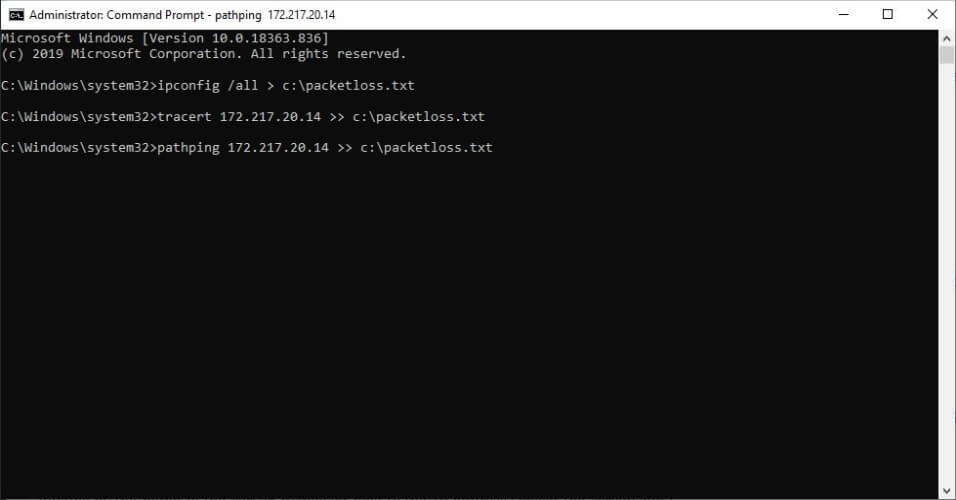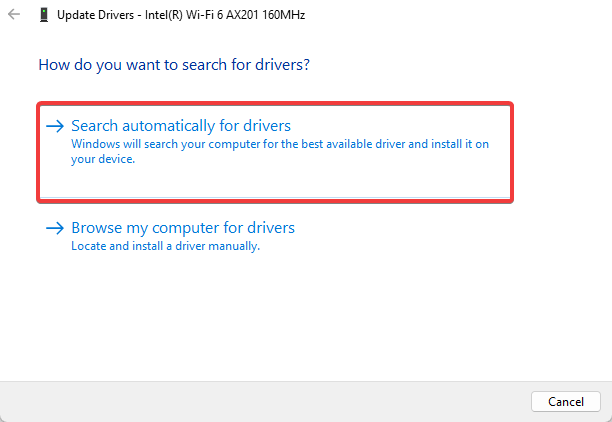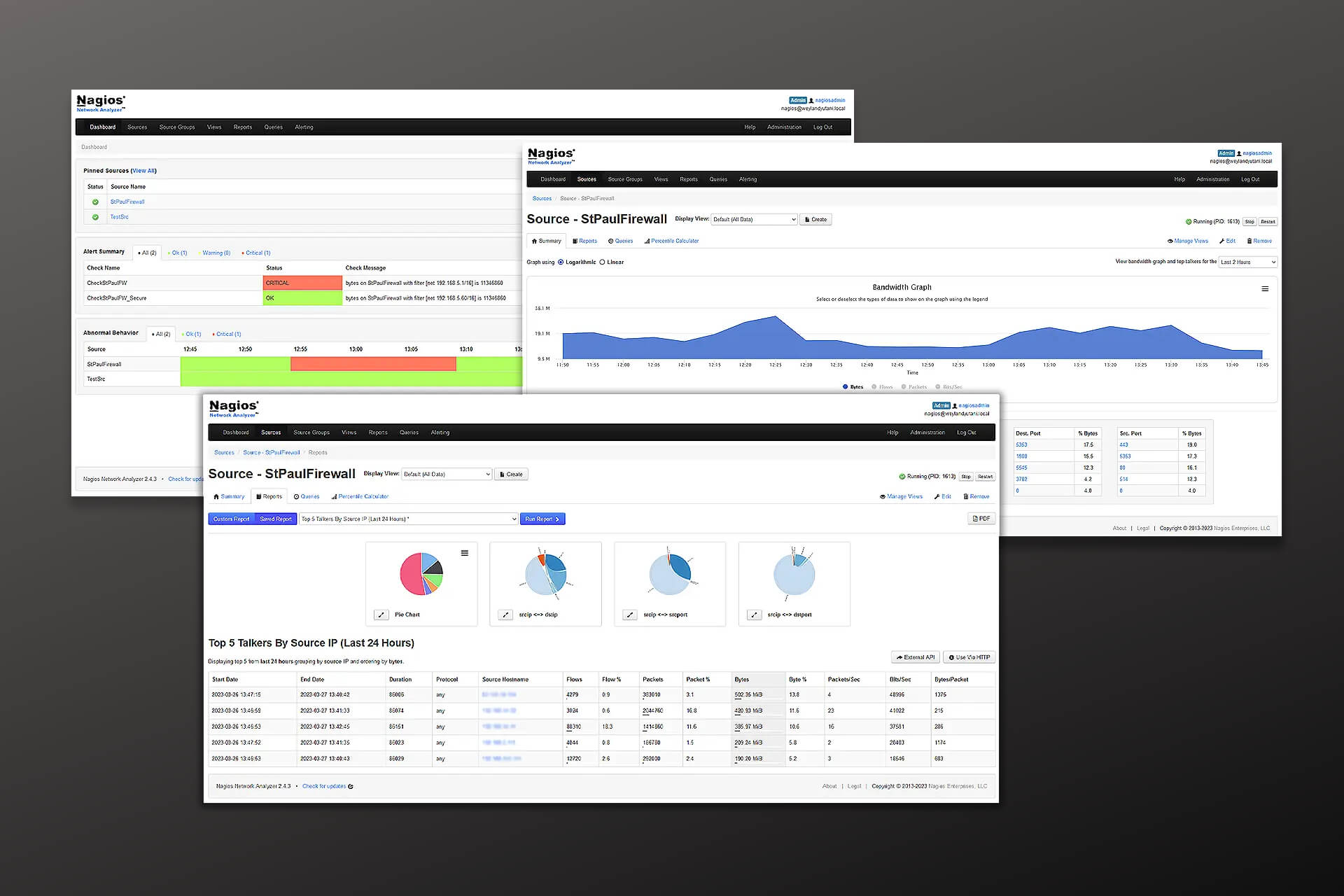How to Fix Packet Loss on Windows 10 [in 3 Steps]
Driver updates or hardware changes can resolve this problem
10 min. read
Updated on
Read our disclosure page to find out how can you help Windows Report sustain the editorial team. Read more
Key notes
- Whenever you access the Internet, your device transmits (sends and receives) data units called packets.
- When some of those packets fail to reach their destination, we call it packet loss.
- For those looking for a quick packet loss fix, we've covered several solutions in this article.
- They involve both using Windows 10's toolset and using third-party software.

Let us talk about packet loss in Windows 10.
Compared to a few years ago, the structure of networks has become very complex. As a result, specific protocols have become necessary to increase security, speed, and efficiency.
However, one thing hasn’t changed: the annoying phenomenon of losing data packets.
Due to various factors, your network might be subject to various disturbances, often leading to high ping situations and packet loss.
Various software solutions are available to identify packet loss in a network. They work by detecting packets somehow, such as calculating their travel time or analyzing the packets.
Pinging devices on your network is the simplest way of implementing a packet loss fix, which we will go through later in this article.
Why does packet loss appear on Windows 10?
Many users reported 100% packet loss on their PCs; this issue can occur on any version of Windows, and your network hardware usually causes it.
This can be a problem, and it will cause high latency and ping in games while browsing the web. However, it’s important to mention that any hub between you and the server can cause this issue.
The issue was reported on all types of connections, and many reported Wi-Fi packet loss on their PCs. Other variations of the issues as reported by users are listed below:
- how to fix packet loss wired connection
However, you can fix these issues, and this guide will show you how to do it.
What is packet loss?
Whenever you access the Internet, your device transmits (sends and receives) data units called packets. If some packets fail to reach their destination, we call it packet loss.
This phenomenon can be observed through network slowdowns, disruptions, and total network connectivity loss.
Although any network service can be targeted by packet loss, games, VoIP services, and multimedia streaming services are more affected.
These apps are more likely to suffer packet loss because they process packets in real-time.
What causes packet loss?
- An overloaded network: high traffic volume over several devices such as routers, servers, and terminals.
- Unstable devices: if some of the devices on your network have weak or overloaded CPUs, said devices become unable to process data entirely. This can affect your whole network and be a cause of packet loss.
- Software/firmware issues: glitches in a network device’s software can lead to packet loss, affecting the whole network.
- Hardware-related issues: low-quality cables, faulty RAM modules, and outdated network adapters can all contribute to causing packet loss.
Many factors can play a role in packet loss occurring on your connection; however, the ones above are among the most common ones.
How to test for packet loss?
1. Use specialized software such as PRTG Network Monitor
- Get PRTG and install it on your PC.
- Wait for the installation to complete (it takes a while).
- Launch PRTG and log into it.
- Let it perform the initial assessment and create sensors for your network devices.
- Observe any faults or malfunctions with your network devices (high ping/packet loss).
PRTG Network Monitor is a complex tool for Windows 10 and also 11 that can perform an extensive analysis of your network and its devices.
Some PC users might still consider it intimidating from a feature standpoint, but it offers an interactive tutorial as soon as you log into it, so you will be just fine.
Its (web) interface comes with a broad range of tools you can work with and even define your own sensors.
For instance, you can stay protected using the built-in Packet Sniffing Sensor that detects suspicious network packets.
You’ll be glad to know that it has a general trial. During the trial, you can use the app with unlimited sensors (30 days).
After the trial expires, you’ll be limited to 100 sensors.

PRTG Network Monitor
Forget about packet loss and other network problems! Use the best network monitoring tool on the market for your PC!2. Use Windows’ built-in set of tools
- Use a packet sniffer such as Wireshark to see what servers you’re connected to.
- Hit the Windows key on your keyboard, type cmd, and select Run as administrator.
- Type the following line in Command Prompt and hit Enter.
ipconfig /all > c:packetloss.txt - Now type the following line and replace x.x.x.x with the IP of the server you suspect of packet loss.
tracert x.x.x.x >> c:packetloss.txt - Once more, type the following line and replace x.x.x.x with the IP of the server you suspect of packet loss.
pathping x.x.x.x >> c:packetloss.txt - Wait for the pathping operation to complete (can take up to 10 minutes).
- Check the created file for high ping values, which can signal packet loss.
Using CMD to test for packet loss is also effective. As the hop count increases, your connection gets further away from your PC.
Therefore, the first hop (i.e. hop 0) is your PC, the next hop (hop 1) is your PC-router connection, hop 2 is the connection from your router to your ISP’s line.
After the third hop (hop 2), the connections belong to your ISP’s network.
You should be able to single out the server owner judging by the server’s name displayed next to the IP address (check the screenshot).
The last hop is the server you connected to and ran the test against.
Note: If you don’t want to create any log file on your PC (i.e., the packetloss.txt document), you can run the commands listed above without the > C:packetloss.txt and >> c:packetloss.txt bits.
Doing so will only display results in the command prompt.
How much packet loss is normal?
We often classify losses of less than 1 percent as excellent for streaming music or video and 1 – 2.5 percent as acceptable. However, losses between 5 and 10 percent of your total packet stream would considerably impact the quality.
How do I get rid of packet loss in Windows 10?
1. Use a VPN
Using a VPN might significantly reduce packet loss since you are playing on another server. The best VPN to use is ExpressVPN since it has some of the fastest servers.
Here is how to get ExpressVPN:
- Download and install ExpressVPN from the official website.
- Open ExpressVPN after the installation was completed.
- Select Choose Location to open all the available IP locations.
- Select the Recommended region or one that you need.
- Enjoy using ExpressVPN.
When using ExpressVPN, it also creates a layer of protection for your data. When surfing the web you can’t be tracked, you are completely anonymous and no logs are left behind.
Not only can this service improve your ping, but it can also protect your privacy, keep your connection secure, away from prying eyes, and lift geo-restrictions for you by spoofing your location.

ExpressVPN
No more lagging and experiencing packet loss while gaming.2. Isolate and troubleshoot each hop
There’s no magic fix to packet loss since the pathway between you, and your server of choice is long and full of hops.
Therefore, you must isolate the issue and understand what part of your connection is at fault.
Therefore, the first step would be checking the log file you created earlier or the results in the command prompt window.
There are five different scenarios.
2.1. High ping on hop 0 and/or hop 1
If there’s high ping on either or both of these hops, the problem’s on your side.
You need to check that you’re using high-quality Ethernet cables, or if you’re using Wi-Fi, try using a wired connection and rerun the test to see if there’s any improvement.
Hard reset your router, and maybe check the configuration of your PC’s network adapter. Then, you need to carefully check every component between your PC and router, including the two ends of that connection (i.e., your PC and your router).
2.2. High ping on hop 2
As we’ve stated, hop 2 stands for your router-ISP line connection.
Therefore, if there’s nothing wrong with your router, then it might be the cable that belongs to your ISP and goes into the WAN port of your router.
In this case, you might want to call your ISP and ask them if there seems to be a problem on their side.
2.3. High ping on your ISP hops (e.g., 3, 4, 5)
Again, the only way to fix this is through your ISP. Give them a call, tell them about your findings, and maybe even provide them with some information on your log file.
Remember that neither tracert nor pathping is illegal to use, so don’t be shy and offer your ISP as many details as you can. Your information might be of great value to the support team.
If the high ping is outside your ISP network, you must call your ISP and tell them about your findings. Maybe they’ll know how to tackle this situation onward.
2.4. High ping at the last hop
The last hop stands for the server you’ve connected to and running your tests against.
Therefore, if you notice high ping exclusively on this hop, there’s nothing wrong on your side, and the server is experiencing some problems.
If you want to, you can contact the service you’re having trouble with and make them aware of the situation.
For instance, try contacting the game’s support crew and tell them about your findings if it’s a game server.
3. Update device drivers
- Right-click on the Start menu and select Device Manager.
- Expand the Network adapters section, right-click on your network card, and select Update driver.
- Select the option to Search automatically for drivers, and follow the prompts.
You should update the network card drivers. However, the same is true for other devices, such as wireless access points. Additionally, you should ensure that the firmware is current.
How can I fix Windows 11 packet loss?
Windows 10 and the new OS are incredibly similar. In fact, except for minor differences, you may not tell them apart. Hence, you should be able to apply all the solutions we have given above to fix the packet loss on Windows 10 and 11.
There may be the occasional UI difference, but the same solutions apply.
Does packet loss make you lag?
It is known as packet loss when information sent between your home network and a gaming server does not reach the final destination. Like excessive ping, packet loss may lead to an increase in lags and in-game problems like rubberbanding. Even with a fast internet connection, packet loss may still happen.
To wrap up, if you’re experiencing packet loss, it’s not the end of the world.
Sure, it’s annoying and renders your connection unusable at times, but if you have a bit of patience, you can figure out where the problem is and maybe even fix it.
Note that you may face upload packet loss, Windows 10 packet loss on Wi-Fi or ethernet, or packet loss while gaming. Regardless of the case, our solutions contain how to fix packet loss on both the wired and wireless connection.
That will be it for this guide; let us know if this has been helpful in the comments section.



















User forum
0 messages